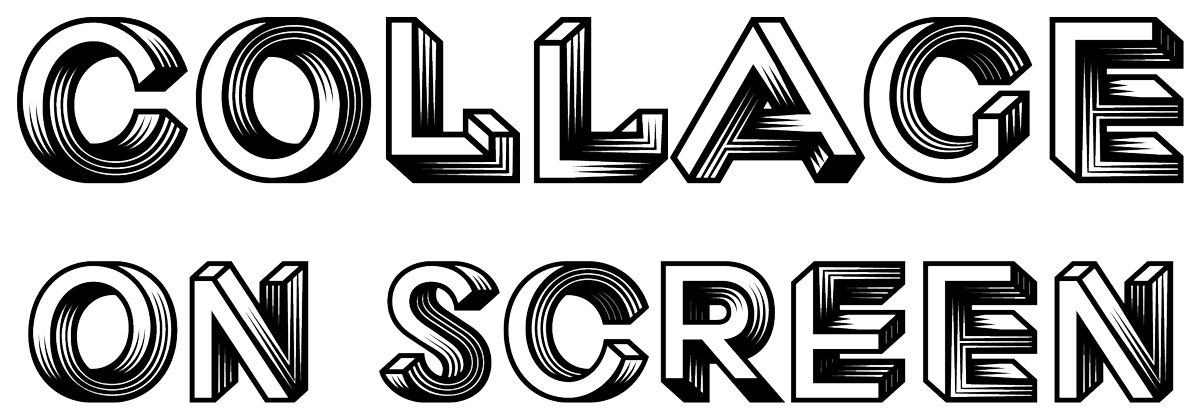

Collage on Screen, an eclectic evening of moving images, is part of Kolaj Institute’s Collage in Motion project, which explores collage and the moving image, a broad, loosely defined category that includes animations, film cut-ups, collage film, stop-motion, documentaries about collage artists, and other forms of media in which collage—as medium or genre—is present.
This year’s program features selections curated by Lisa Barcy, whose collage was chosen for the cover of the first Kolaj Fest New Orleans program in 2018 and is a regular participant in the festival. She is an award-winning filmmaker and collage artist whose films have screened internationally at many film festivals. In addition to gallery exhibitions and short films, Barcy created music videos for Andrew Bird, and projections for dance and theater companies. She teaches animation at DePaul University in Chicago. “I am pleased as punch to return to Kolaj Fest New Orleans with a new program of films.” The program includes prolific animator Janie Geiser, films by the late filmmakers Doug Haynes and Helen Hill, and a range of animated films featuring both handmade and digital techniques. Barcy writes, “While every collage animation line-up is a collage in and of itself, from social satire to personal narrative, what they have in common is their own idiosyncratic poetry, and a treasure trove of found images as a point of inspiration.”
The second half of the program will feature works made during Kolaj Institute’s Collage on Screen Artist Residency, a five-week program designed to support artists who want to develop a practice that includes motion in their artmaking. The artists worked virtually over five weeks in Summer 2023 where they explored the history of collage on screen and the various ways that collage makes its way to the screen and how collage artists operate in the space of moving images and sound. They considered these ideas: “Unlike two-dimensional art, collage on screen is temporal art, meaning it moves through time. Because of this, viewers experience Collage on Screen not as a linear series of images but as an immersive experience.” This residency asked, “How do we, as collage artists, make artwork that speaks to that?” After the residency, the artists continued to develop their films with an eye towards screening them at Kolaj Fest New Orleans in 2025.
After the screening Lisa Barcy will facilitate a Q&A session with filmmakers in attendance: Emily Denlinger, Kathryn Kim, LaVonna Varnado Brown, Suzanne Greenberg, and Martin Mulcahy.
For the Collage in Motion project, Kolaj Institute sees its role as not one of defining “collage in motion” but as one of asking what “collage in motion” can be. The project manifests as articles in Kolaj Magazine, an online directory, workshops, residencies, and screenings. Artists with a practice of Collage in Motion are encouraged to submit to the online directory.
In order of appearance
Curated by Lisa Barcy
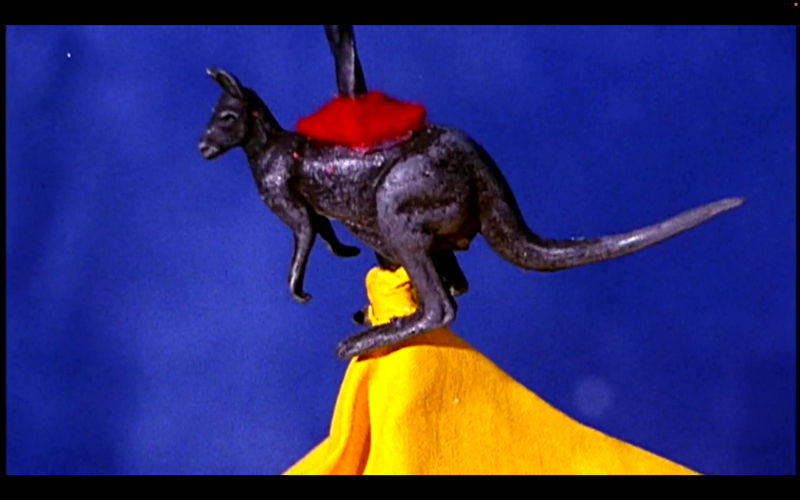
“Why fall in love with strangers when best friends make the best sweethearts? Follow a silhouette through a tunnel of love and animation to learn more. Starring Martin Ontiveros, Julianna Parr, and Trixy Sweetvittles.” Hill was an experimental animator, filmmaker, educator, artist, writer and social activist who lived her final years in New Orleans, Louisiana, a block from the New Orleans Healing Center. Hill studied both poetry and experimental animation at Harvard University and earned an MFA in experimental animation at CalArts. She made several short films while living in New Orleans and continued teaching. In 2002, she started the New Orleans Film Collective with other local artists. The organizers would like to thank her husband, Paul Gailiunis, for the opportunity to screen her work.
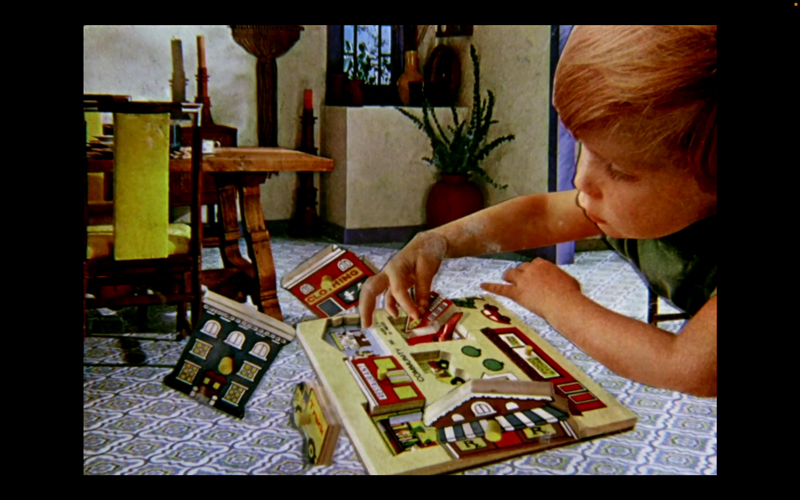
“An exploration of the western concept of time and its imposition on humanity from birth, to regimented learning, to mass consumerism.” Haynes was an educator, filmmaker, and animator, born in New York and raised in Los Angeles. He attended the Art Institute of San Francisco and worked on several animated films including the 1983 feature Twice Upon a Time. Haynes taught animation at The School of the Art Institute of Chicago, where he introduced his students to experimental animation, opening their minds to a world of possibilities, and championing their work in animation and comics back when few art schools regarded both as serious art forms. “We miss him dearly,” writes Barcy.
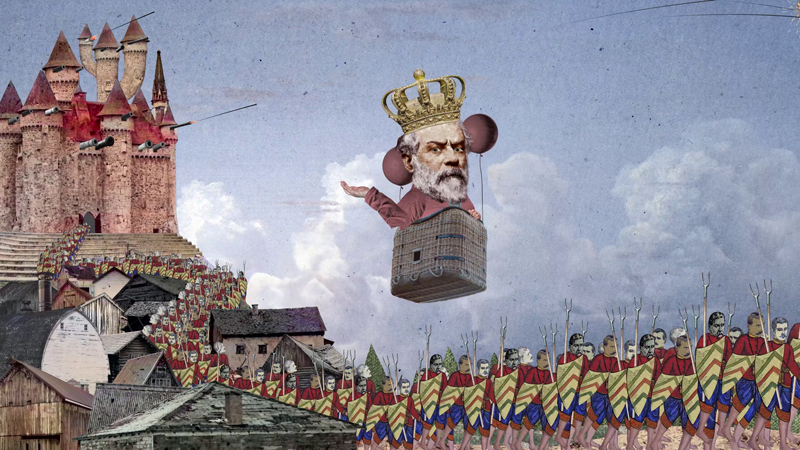
“The respective heirs of warring kingdoms fall in love.” Radi is a digital collage animator from Chicago, Illinois. His work explores the complex relationship between inorganic and organic matter, guided by a curiosity for physical dynamics. By using Photoshop to manipulate stock photos, he constructs unique characters living in dystopian and macabre compositions.
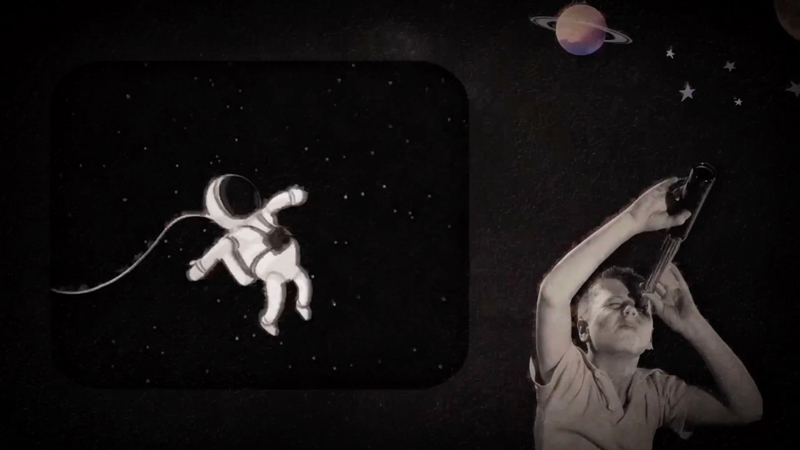
An experimental animation exploring core memories through the objects that trigger them. Mulcahy is a Chicago-based filmmaker working in experimental animation who explores personal history through memories and locations. Using a multi-disciplinary approach, his films combine found footage, image composites, visual effects, dioramas and sound design. To date, he has completed five short films which have screened in festivals across the U.S. His film, My Mattachine, won Best Short Film and the Eadweard Muybridge Award (Director’s Award) at the Kinodrome Film Festival.
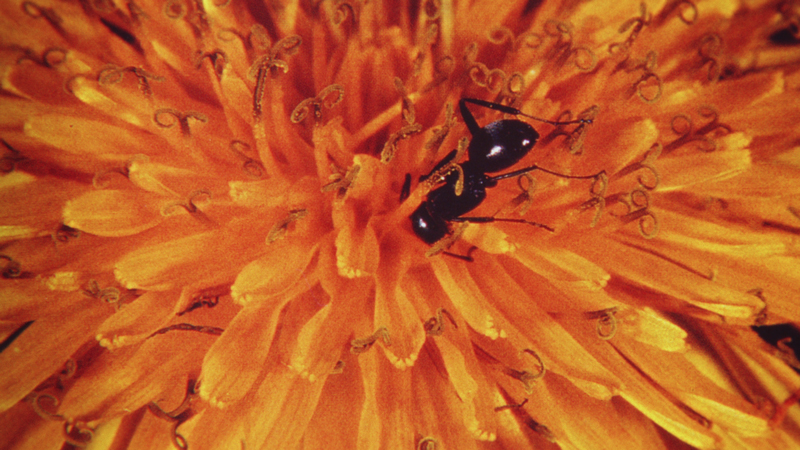
“Depicted in an ecstatic multimedia barrage: my mother does not die once.” Smith is a cinematographer, gaffer, animator, filmmaker, photographer, and visual artist located in New York City and Cincinnati, Ohio. He has made it his goal to share images and stories that are both personal and universal.
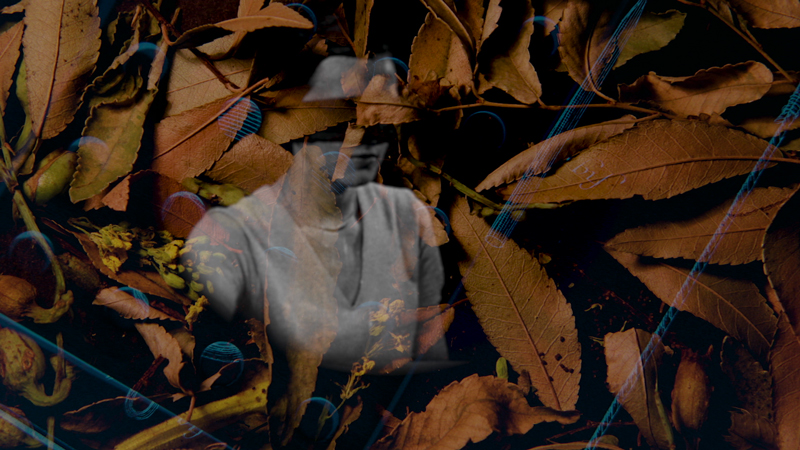
“A subterranean unraveling, seeds fall to the ground with nowhere to land. The only witness is blindfolded, and she, too, falls at some point. The underground factory operates day and night, the burrowing continues, in a long slow attempt to fabricate what could actually make itself.” Geiser is a multidisciplinary artist whose practice includes performance, film, installation, and visual art. Her work is known for its recontextualization of abandoned images and objects, its embrace of artifice, and its investigation of memory, power, and loss. Geiser is a Guggenheim Fellow, a Doris Duke Artist Award recipient, and a Creative Capital awardee.
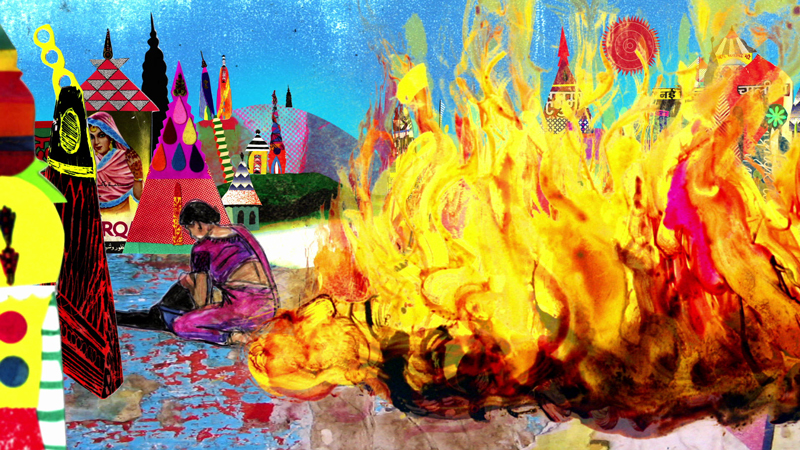
“An abstract narrative, Pareidolia explores the landscape architecture of the body as a container of memories. Through a re-imagining of family stories and life events, the film connects my own transformative experience of witnessing public cremations in India to my Great Grandmother’s miraculous survival of a mass killing by Hungarian Nazis along the banks of the Danube in 1944.” An award-winning animator, designer, and director based in Boston, Massachusetts, Erdelyi creates intricate hand-made animations and collages inspired by imaginary worlds, memories, and the unconscious. Her work has been shown in national and international film festivals, galleries, museums, and DIY venues. She is a faculty member in animation at the School of the Museum of Fine Arts at Tufts University; and the Lesley College of Art + Design in Boston.
Animation by Kolaj Institute’s Collage on Screen Artist Residency Participants

“Cultivate is an animation about the wonder of our environment. Images of native pollinators and invasive insects travel through a cosmic garden. A hummingbird moth flies through nebulae stopping to nectar at blooms of quivering bee balm. The invasive spotted lanternfly appears en masse, overtaking a tree trunk. The ubiquitous Japanese beetle scratches and scurries its way through the underbrush of the devil’s trumpet. The sights and sounds combine to create wildscapes—ambient imagery which asks us to pause and engage with the wild world; to observe that which is everyday yet, perhaps largely unnoticed in the space around us. The ethereal sounds were created by the Chandra X-ray Observatory Data Sonification Project which interprets images of deep space in mystical soundscapes.”
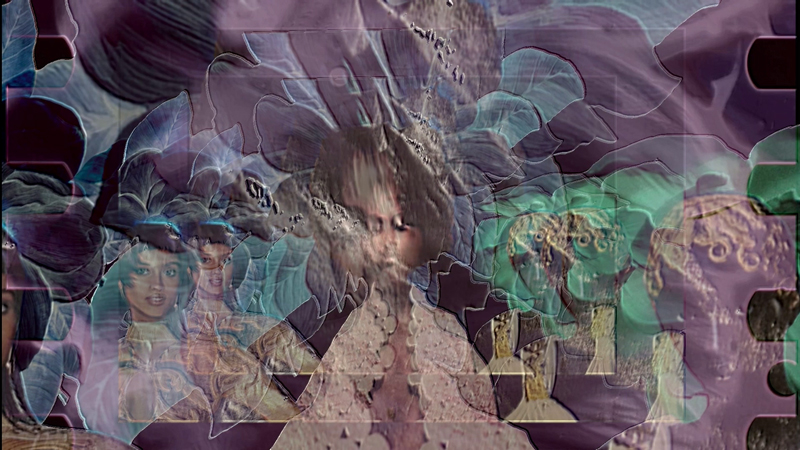
Black Pearls seeks to deconstruct societal perceptions and challenge prevailing stereotypes surrounding Blackness, aiming to foster a profound understanding of beauty. This film delves deep into the intricate essence of Blackness and beauty, unraveling the multifaceted dimensions that characterize these complex concepts. Through a visually captivating journey, the film employs a unique blend of archival footage, photograms, and experimental techniques, including direct animation. By transcending the boundaries of traditional narratives, Black Pearls weaves together a compelling tapestry that not only captures but celebrates the richness of Blackness and beauty. The result is a cinematic experience that encourages reflection and uplifts vibrant aspects of Black culture and identity.
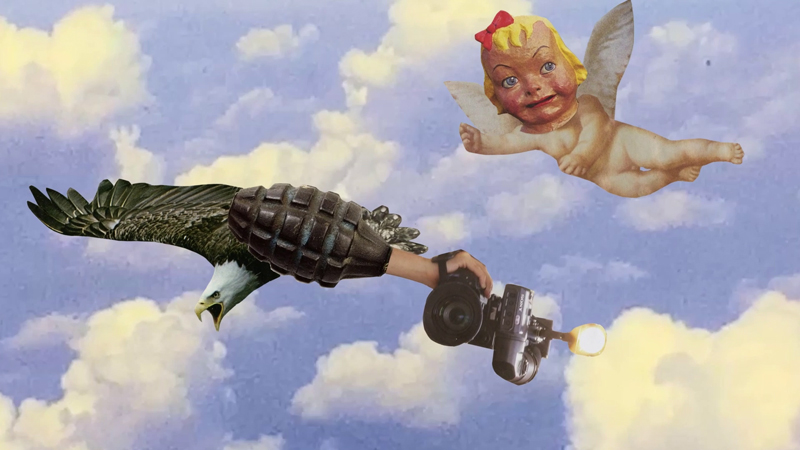
“I create artwork in response to research surrounding the intersections of the military-industrial complex, ecology, simulations, mutations, and futurology. I am interested in the way these topics surface consciously and subconsciously while I am creating. My work illustrates my psychological interpretation of reality. Angel Baby vs. Drone Eagle was created in response to Annie Jacobsen’s nonfiction military history book First Platoon: A Story of Modern War in the Age of Identity Dominance. Vintage 8mm home movies allude to footage contemporary law enforcement drones capture of everyday life in America. People do not realize the extent to which the American government was documenting and archiving drone footage during the war in Afghanistan. Many people do not know that American law enforcement has now turned those tools on America, where most states do not require law enforcement to obtain a warrant before using these tools.”
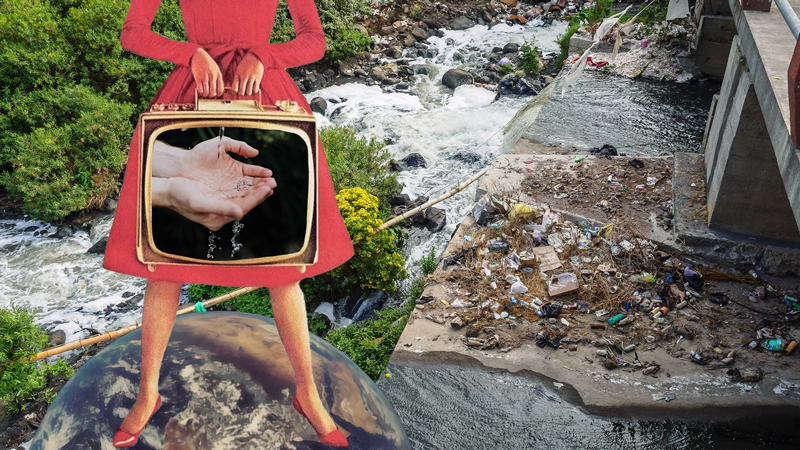
“Behind the Scenes is a thought-provoking collage animation that dives deep into the dichotomy between media representation and the actual realities of climate change. The centerpiece, a television screen reminiscent of the 1950s, broadcasts a reassuring narrative that climate change concerns are overblown, reflecting the stance of some conservative media outlets. However, the stark contrast emerges in the backdrop, which vividly portrays the undeniable effects and harsh truths of climate change. This visual juxtaposition serves not only as a commentary on media bias but also as an indictment of outdated perspectives that label climate change as ‘unscientific’. The inclusion of a 1950s-styled lady further drives home the message that clinging to past beliefs in the face of modern evidence is both archaic and potentially catastrophic. Behind the Scenes is a compelling call to discernment, urging viewers to look beyond the surface and confront the realities of our changing planet.”
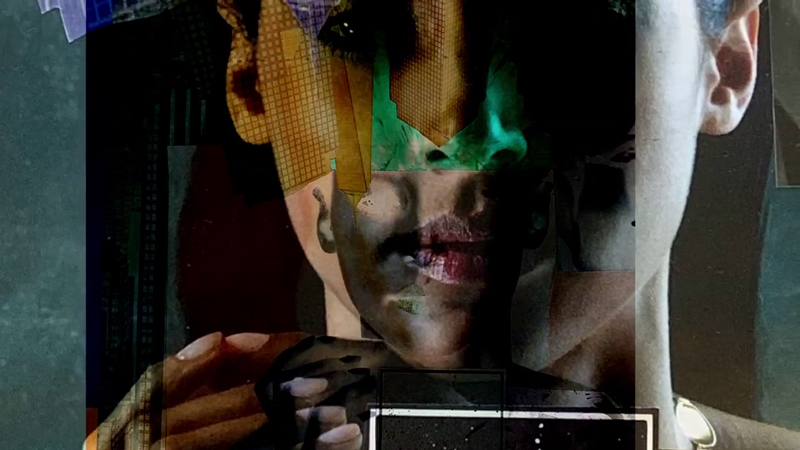
“Suzanne Greenberg draws upon her deepest desires, secret fantasies and private tragedies for her work. She celebrates access to global art materials and works large to depict expansive forces and feelings. Suzanne searches the world for images and materials from the stratum in which humans live and transforms them into powerful illustrations of euphoric sensuality and humanity. In her artwork, she cherishes the imprint of the hand, the imperfect, nontechnical way of making. Suzanne’s work provides lush visions of coexistence and harmony—what can be with what we already have.”
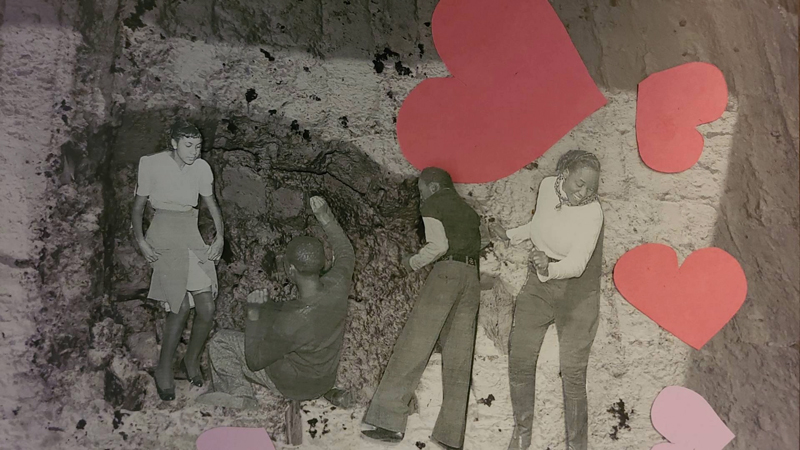
“If ‘dance has never been apolitical’ (Meiver De la Cruz), how does this legacy present in the lives of colonized people? Specifically the kidnapped Africans who were trafficked to the United States and their kin, whose movement and visibility remains highly politicized. Given this reality, MOVE!!! Like You Are Dancing in the Footsteps of Your Ancestors!!! attempts to hone in on the interiority of Black folks that guides their connection to, and practice of, dance. Utilizing collage cutouts and stop motion animation MOVE!!!, is a poetic tribute to the presence and power of Black dance and its ability to build care, community, and connection.”
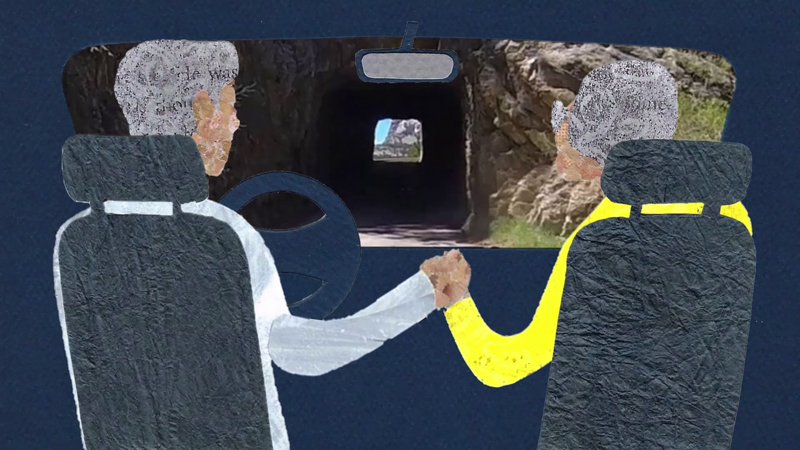
“This short film asks whether the viewer believes in premonition, and then tells a true story about avoiding catastrophe by heeding the warnings of a sixth sense. Featuring footage from local media, combined with vintage photographs and collaged images formed from hand-printed and other papers, this animated motion picture recounts the filmmaker’s and her family’s experiences in June 1972, when Rapid City, South Dakota was devastated by a flash flood. Kathryn Kim is a printmaker and collage artist residing in Seattle, Washington. She is the Program Chair for the Northwest Collage Society, for which she has built an on-line library containing edited recordings of presentations, interviews, and workshops. This movie is her first foray into animation.”
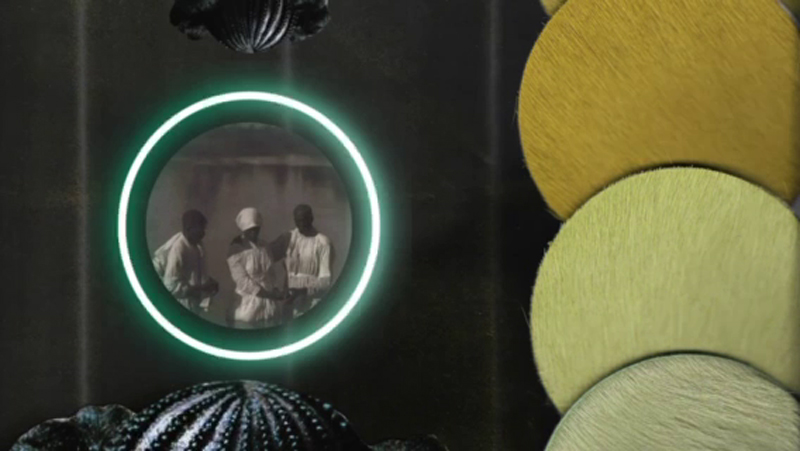
“Land of Milk and Honey: A Generational Study of Abundance is a tiny film with big themes. It is multidisciplinary artist LaVonna Varnado Brown’s first play with decoupage for screen. As seen in most of her work, LaVonna is contemplating Black women, specifically her mother and grandmother, Jovanna Annette Varnado and Carrie Ann Sandolph, who have transitioned to spirit, her daughter, and herself. This is four people, but she refers to three because the understanding is that someone is in someone else’s utero as an egg at different junctions in time. There is always a connection to the spirit, the womb where the root lives through the placenta is a metaphor for the spirit realm. This is represented by the trios and sets of three seen in the visual. In this film, LaVonna is contemplating Black rest, joy, and pleasure, and rebirth. LaVonna plays with ideas of generational wealth in immaterial forms through use of the cowry shell and neon orbs. Love, mental health, and pleasure access is a form of generational wealth that Artist and Momma LaVonna want to leave as her legacy. The knowledge that access to pleasure is possible through getting to know oneself by reaching back to the root is the portal to the Land of Milk and Honey.”
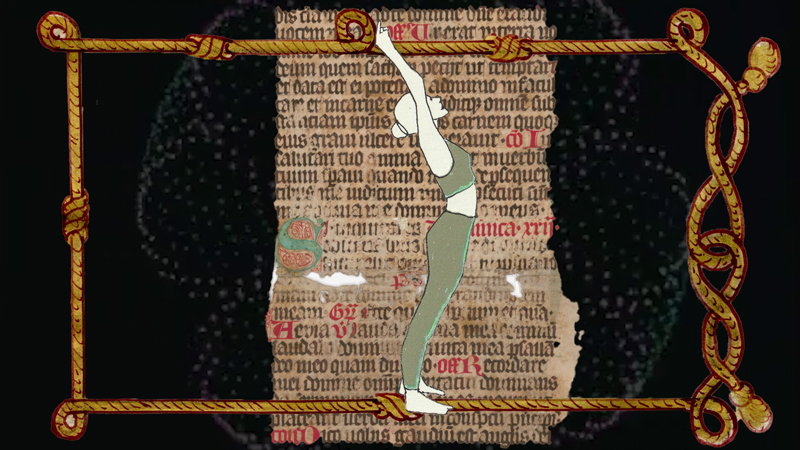
“I am routinely pushed Instagram ads for training programs to ‘deepen your backbend,’ featuring limber women engaged in yoga poses unattainable to the average practitioner. This urgency for seemingly supernatural flexibility appears to come from a more desperate desire to feel complete, or whole. Thus, Yogini Ouroboros (A Deeper Backbend) offers a multi-pose yoga sequence aimed at transforming the practitioner—bringing her to a state of ecstatic eternal return and oneness with the universe. The source images are from my original screen prints or public domain alchemical texts and illuminated manuscripts. The music is by Chanticleer, Sanctus Polyphony.”
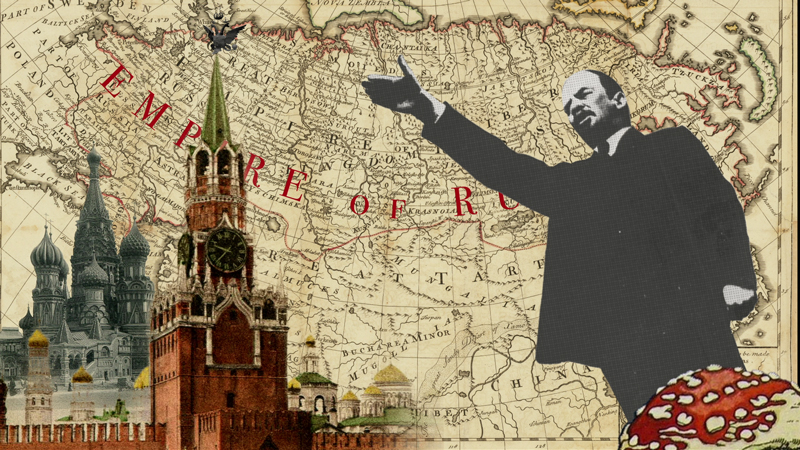
“This is a tribute to the memory of the outstanding film director and collage artist Sergey Parajanov, as well as to my ancestors—both those I knew and those I never met. This experimental animation traces the significant events of 20th-century Russian history through an archival collection of vintage photographs depicting my family’s journey.”

“Marika is a Teaching Assistant Professor of Studio Art at Oklahoma State University. She collects illustrations from feminine-coded mid century print ephemera—such as sewing packets, greeting cards, and recipe books—which she translates into digital collages and print-based works. In Bug Ballet, the insects from a series of 1970s ‘How and Why Wonder Books’ take flight and perform a coordinated ballet for the viewer’s amusement.”
Collage on Screen was made possible in part due to the support of members of Kolaj Institute's Silver Scissors & Golden Glue Societies who support the work of Kolaj Institute while receiving a piece of the collage community to their mailbox each month. To learn more visit Kolaj Institute's Website.